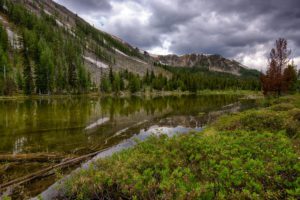Photo: Tatiana Gettleman, USGS (Fiickr)
Western Watersheds Project and our allies at Wilderness Watch have successfully convinced the Bureau of Land Management to drop vegetation “treatments” – including fire – in federally-designated Wilderness south of Great Basin National Park. The South Spring and Hamlin Valley Watersheds Restoration Plan included unlawful actions in the Highland Ridge and White Rock Wilderness Areas, which together comprise over 63,000 acres of this fragile arid landscape within the traditional lands of the Goshute and Southern Paiute people.
Agencies often ignore the impacts of livestock grazing when they seek to justify heavy-handed treatment options like those proposed in the restoration plan. But when agencies interfere with natural processes, they violate both the letter and intent of the Wilderness Act and put ecosystem health at risk. We commend the Bureau for showing restraint, rethinking its plans, and dropping these proposed management actions in response to our efforts.
While this is a nice win for Wilderness, the fight isn’t over yet. Outside of the official wilderness areas, the Bureau’s final decision authorizes hundreds of thousands of acres of destructive vegetation projects in sagebrush, juniper, and pinyon pine communities on public land in the South Spring and Hamlin valleys. Sage grouse, pygmy rabbit, pinyon jay and other species remain at grave risk of having their habitats destroyed by the agency’s plans for chaining, burning, poisoning, and reseeding. This is forage production for livestock being sold as “restoration,” and we’re not fooled.
We’re gearing up to fight the final decision. For more information, contact adam@westernwatersheds.org.






